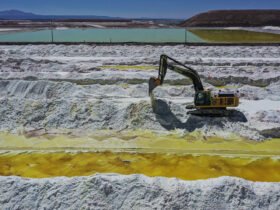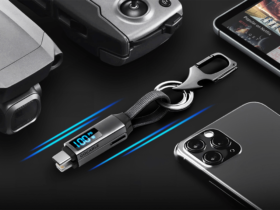I’m at my second ever NASCAR race and I’ve made it to Victory Lane. Granted, all I had to do was clamber over a few barriers and flash a laminate. I spent most of the 110 laps sitting comfortably overlooking the Sonoma Race Trackabout an hour north of San Francisco, and the hardest thing to drive was snacks in my face.
It’s June 9 at the 2024 Toyota/Save Mart 350 and I’m a guest at Hendrick Motorsports, celebrating the organization’s 40th anniversary and first place Kyle Larsondriver of their Valvoline Chevrolet Camaro ZL1, number 5. Larson and his team expertly navigated to the left And right turns plus strategic pit stops to take his third win of the season and his second career victory on this demanding 12-turn, 4.12-kilometer road course.
This is hilly terrain, woven into the same patchwork as the vineyards that cover these iconic valleys. It’s Northern California, and at Valvoline’s invitation, I spent time in the festival-like atmosphere learning about two fluids that keep the region going: motor oil and wine. And that education starts two days earlier with a completely different victory.
Pole position
The story begins, like so many California stories, at a winery. Specifically Judd’s Hilla second generation family winery Napa’s Silverado Route. Appropriately enough, a winery started out of the owner’s garage 35 years earlier. That is a location that is known to both mechanics and winemakers. But there are no sockets or ramps or dirty rags, no detuners or presses or fermentation tanks in our workshop. Just a sunny courtyard full of tables with full wine bottles and empty measuring cylinders.
We are here to learn about blending grape varieties and experience how a few milliliters of Cabernet, Merlot, Malbec or Petit Verdot can change the acidity, lightness and complexity of a wine. And we’re here to learn how this is related Valvoline’s latest premium synthetic Restore & Protect (spoiler alert: you still can’t drink it).





Let’s start with the wine. Well, wines. We are split into two teams to participate in a competition. Judd’s Hill has launched four of the six typical red Bordeaux grapes and challenged us all to find a balance of fruit and structure that appeals to our palate, and then decide in our team which has the most depth. Once we declare our collective award winner, we will bottle our proprietary ratio and submit it to three judges for a blind tasting to determine which team triumphs.
As we pour and sharpen our tannins, we hear from Dr. Michael Warholic, Global Technology Director, Valvoline Global Operations. Dr. Warholic, a chemical engineer by trade and lead formulator at the company’s laboratories in Lexington, Kentucky, introduces us to Restore & Protect. It probably sounds difficult to make motor oil recognizable, but the quarter century of Dr. Warholic in the industry helps with that. And given the serene environment, the attractive Mediterranean climate and the amount of test swirls, sniffs and especially sips we have to take – in the name of science – we are quite receptive.
Pit stops
Both wine and motor oil are the result of small chemical components with significant effects. In the case of wine, microclimates, terroir, nutrients, drainage and more contribute to the ripening of different grapes. Small changes in sugar content (Brix) and acidity (pH) produce different flavors and influence aging potential. Additional factors, such as the type of oak barrel each grape is stored in and the ambient temperature and length of time it remains there, contribute to the end result.
Not everyone can distinguish the subtler nuances when you adjust the proportions of a leathery Cabernet Sauvignon versus a fleshy Merlot. And that’s okay. Some wines change your life, but most simply change your day. However, when it comes to your vehicle, “What’s in your engine is about 85% oil… but it’s the 1% or 2% of this additive or that in premium products like Restore & Protect that really makes the biggest difference ,” says Dr. Warholic.
“In an internal combustion engine, real estate is valuable… you have friction modifiers, detergents and anti-wear agents all competing for surface space, so finding the right balance of each molecule is critical. And Restore & Protect has achieved that.”
Every few years, science turns around the benefits of drinking wine in moderation. We currently do not have any amount that is “good” for you. But no one has ever said the same about whether oil can slow damage to gasoline engines. Restore & Protect, which exceeds ILSAC GF-6A and API SP specifications, even aims to combat age-related buildup.
“We put two Ford Mustangs on it a roller bench and drove it for 300,000 km… then we took them apart and found that one of them got cleaner with every oil change, which was remarkable,” says Dr. Warholic. Another example given involves tearing down the engines of Ford Explorers after 500,000 miles of standard store brand oil use to find multiple nearly stuck rings. By comparison, continued use of Restore & Protect minimized cylinder wall wear by 79%.

Dr. Warholic reinforces the message by directing us to a display box showing a quartet of pistons and the amount of deposits removed from them between the first and fourth oil changes. This is thanks to two patented technologies – “Active Clean” and “Liqui-Shield” – which have been developed to not only slow aging, but also restore and maintain a factory clean condition with regular maintenance intervals. It cannot replace the metal, but it can protect it from further wear and tear.
Playing with all these polymers and percentages sounds like a winning formula. Speaking of winning formulas: after the Restore & Protect presentation, we will come up with our own presentation. We have selected the merits of our team and named them “ValvoWine”. With 10% Merlot, 60% Malbec and 30% Cabernet Sauvignon, it gives Cahors and California each other: dense dark fruit that is chewy and creamy in balance, but tends to be ripe rather than rustic, and not at all aloof. It’s a crowd pleaser and the jury agrees. We emerge victorious, congratulatory bottles from our alcoholic collection in our hands. Perhaps oil and water do mix in some sense.

The parallels between car lubricants and California wine country, which we explore from our base the Silverado Resortdon’t stop just because the mixing competition does. Valvoline has been around since 1866, while it was the first winery in Napa Valley. Charles Krugwas founded in 1861 (Buena Vista in Sonoma Country predates 1857). Both Valvoline and these valleys have a long history and both have come a long way, building on some shared foundations.
Fluid dynamics is an integral part of every final product. An oil’s viscosity is critical to properly reducing friction, while the way a wine flows determines its mouthfeel: the synergy between flavor and texture. Heat plays a major role in both, contributing a factor that can affect the coating of engine oil parts and the proper fermentation of wine. Both oil producers and winemakers need to worry about filtration and keeping solids from settling. And all of this plays a role in aging, in knowing when fluids are most stable and smooth.
These thoughts and many more cross my mind as we enjoy lunch Stag’s Leap Wine Cellars. Not only is it picturesque, but it is also a pivotal location in the history of Californian wine, as Cabernet Sauvignon won at the 1976 Verdict on the wine tasting in Parisannouncing that New World viticulture had something to say. And the vineyards – with their ideal location, varied soils and moderate slopes – are oriented to produce exceptionally rich grapes and high-performing wines, if you know how to properly manage canopy, pests, etc.
Orientation. Distance. Air circulation. Irrigation. Ideal temperature ranges. Preventing overheating and optimizing output. Everything to produce a long finish. We’re talking topography, but it’s a mix of conditions and innovations that sound like motorsport. And that brings us back to NASCAR.


The checkered flag
There’s fluid dynamics and then there’s fluid and dynamic, and you need both to win at Sonoma Raceway. Suspension adjustments, gear ratios, etc. are required to handle the sharp changes in direction. But it also requires drivers who can adapt their style and responses to elevation changes, braking and acceleration zones that are very different from oval racing. Perfection in fuel and tire management is required. And it absolutely requires the most thermally stable, degradation-resistant technology.
Restore & Protect was the product of nearly 150 people and three years of modeling and field testing, both for the mass consumer version and for the special formulations for Hendrick-sponsored Chevrolets. After each race, Valvoline takes back the oil, analyzes it and correlates it with track data. It’s a great glove for testing how metal-to-metal contact can be minimized, and how advanced additives prevent combustion under extreme environmental and operating conditions.
No, my car is not receiving the same stressful drug. Still, higher mileage vehicles can benefit from removing the engine-killing carbon compounds that trap and disperse heat. After all, who doesn’t want a little more oomph when accelerating, smoother idling, better fuel economy and maximum engine life? All this could prove possible over time with Restore and protect.
“Win on Sunday, sell on Monday” is a long-standing expression in motorsports. And if true, there may have been some serious Restore & Protect product sold after Larson’s first-place finish. It was certainly an exciting end to an informative weekend. Standing in Victory Lane, I watch Larson take a celebratory sip from the Winner’s Circle cup of red wine. If only it were ValvoWine.
















Leave a Reply